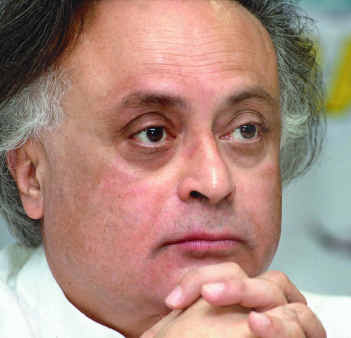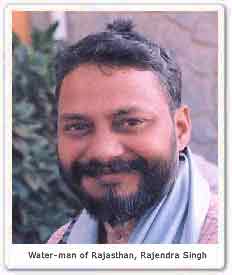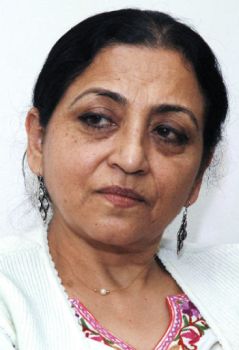
The All India Ganga Yamuna Panchayat held in Delhi from February 8 to February 10, 2010 submitted a charter of demands to the Minister for Environment and Forest Jairam Ramesh to ensure unrestrained and unpolluted flow of Ganga and Yamuna rivers in their entire course from Gaumukh and Yamunotri to Gangasagar, according to a press conference of the Ganga Jamuna Jal Biradari held at the Press Club of India, New Delhi after the event.
The Panchayat was attended by the Minister for Environment and Forests, Jairam Ramesh, the Joint Secretary Rajeev Gauba and other government officials drawn from several government authorities entrusted with management of water resources of the country represented the government while members and activists of Ganga Yamuna Jal Biradari from all the 11 states through which the two rivers pass, represented the people. The Panchayat was presided over by Swami Avimukhteshwaranand Saraswati of Jyotirmath as representative of Shankaracharya Swaroopanand and he was assisted by river specialist Prof. Rashid Hayat Siddiqui.
To ensure free flow of water and prevent pollution of rivers in India, Tarun Bharat Sangh headed by the Water Man of India, Rajendra Singh has joined hands with Manushi Sangathan headed by noted Human Rights Activist Madhu Purnima Kishwar to further the cause of Ganga Yamuna Jal Biradari and co-ordinate its efforts to turn it into a people’s movement.
Since time immemorial, rivers have been held sacred in India and worshipped as goddesses. Ganga is also worshipped as a mother goddess. It is therefore painful to see these rivers being polluted by discharge of huge quantities of sewerage from cities and human waste from Ashrams and Dharamshalas located on either side of the rivers. Rivers have been the lifeline of all living beings which is why most ancient civilizations came up along the rivers.
The 375 km stretch from its origin at Yamunotri to Delhi, Yamuna water has been found to be of a reasonably good quality. But, between Wazirabad barrage and Okhla barrage no fewer than 15 drains of waste water are discharged into the river polluting the river beyond measure. And, pollution continues along the way till it becomes a tributary of river Ganga at Allahabad.
River Ganga too is polluted by sewerage drains, industrial effluents and discharges from Ashrams and Dharamshalas dotting the banks of the river in its entire course.

Rajendra Singh as well as Madhu Kishwar welcomed the positive approach of the Minister for Environment and Forests, Jairam Ramesh, in declaring that no new dam projects would be taken up. However, Jairam Ramesh expressed his helplessness in National Thermal Power Corporation’s 600 MW power project at Loharinag-Pala dam on Bhagirathi river as Rs.1,000 crore has already been spent on it. To this, Swami Avimukhteshwaranand responded by saying that it if it is a question of Rs.1,000 crore, he would try to mobilize the fund from the people to abandon the project.
Speaking on the occasion, the president of Ganga Yamuna Jal Biradari Rajendra Singh emphasized the need to highlight cultural, social, religious and spiritual importance of these rivers for protecting them. He also stressed the importance of ensuring unrestricted flow of these rivers as also the need to identify and reclaim the floodplains of these rivers. Further, there is a crying need to prevent exploitation, pollution or damming of their waters.

Madhu Kishwar revealed the unanimous decision of the Panchayat to include Bhagirathi, Alaknanda, Mandakini and all other tributaries in the new Ganga Yamuna Action Plan since the old plan has all but failed because the pollution levels set by the government were causing more harm than good to the rivers.
Other demands included a legislation to protect these rivers on the lines of protection accorded to forests. Steps need to be taken to keep the flow of sewerage water separate from the flow of the rivers as was the case a couple of decades back.
The contribution of Swami Shivananda of Matri Sadan in Haridwar in persuading the Uttarakhand government to restore the Kumbh area to its 1998 status with a view to stop illegal mining on the river bed along the Ganga through a fast that lasted for over a hundred days was lauded at the Panchayat.
Similarly, the vow to fast unto death by Baba Nagnath of Manikarnika Ghat in Varanasi for about 575 days to pressurize the government to remove impediments created in the aviral flow of Ganga through construction of dams won the solidarity of the Panchayat.
Decommissioning of existing dams was also sought to be carried out in a phased manner. The Panchayat also stressed to importance of implementing soil and water conservation measures and integrated watershed management of these river basins. Further, there is a need to rejuvenate drying ponds, water channels, streams, rivulets and tributaries of these rivers.
Responding to this, Environment Minister Jairam Ramesh expressed the hoped that the government, the people and spiritual leaders would channelize their efforts to give shape to these aspirations.
Taking this crusade further, the Ganga Jamuna Jal Biradari plans to launch an indefinite Satyagraha from the Kumbh Mela in Haridwar on March 12, the day Mahatma Gandhi started his Salt Satyagraha. The Satyagraha will continue until these rivers are freed from the filth that is discharged into them day in and day out.




